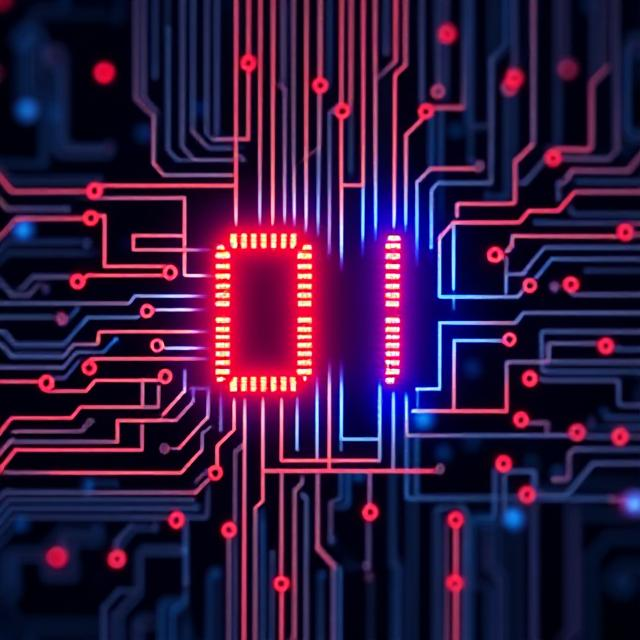Digital electronics is built upon binary logic — a system where signals represent one of two possible states: 0 (LOW) or 1 (HIGH). At the core of this logic system are logic gates and Boolean algebra, which form the foundation of all digital circuits, from simple calculators to complex microprocessors.

What Are Logic Gates?
Logic gates are electronic circuits that perform logical operations on one or more binary inputs to produce a single output. They are the building blocks of digital systems and are implemented using electronic switches like transistors.
Each gate follows a specific Boolean function, and the output depends on a defined set of input values. The primary logic gates include:
1. AND Gate
-
Symbol: D-shaped with two or more inputs
-
Operation: Output is 1 only if all inputs are 1
-
Boolean Expression: A · B (or AB)
-
Truth Table:
| A | B | Output |
|---|---|---|
| 0 | 0 | 0 |
| 0 | 1 | 0 |
| 1 | 0 | 0 |
| 1 | 1 | 1 |
2. OR Gate
-
Operation: Output is 1 if at least one input is 1
-
Boolean Expression: A + B
-
Truth Table:
| A | B | Output |
|---|---|---|
| 0 | 0 | 0 |
| 0 | 1 | 1 |
| 1 | 0 | 1 |
| 1 | 1 | 1 |
3. NOT Gate (Inverter)
-
Operation: Reverses the input
-
Boolean Expression: A̅
-
Truth Table:
| A | Output |
|---|---|
| 0 | 1 |
| 1 | 0 |
Universal Gates
Universal gates are gates that can be used to create any other gate:
4. NAND Gate (NOT + AND)
-
Output: 0 only when all inputs are 1
-
Boolean Expression: (A · B)̅
5. NOR Gate (NOT + OR)
-
Output: 1 only when all inputs are 0
-
Boolean Expression: (A + B)̅
These are called universal gates because any logic function can be implemented using only NAND or NOR gates.
6. XOR (Exclusive OR) Gate
-
Operation: Output is 1 if inputs are different
-
Boolean Expression: A ⊕ B
7. XNOR (Exclusive NOR) Gate
-
Operation: Output is 1 if inputs are the same
-
Boolean Expression: (A ⊕ B)̅
Introduction to Boolean Algebra
Boolean algebra is a mathematical system used to describe and analyze digital logic circuits. It uses binary variables and logical operations (AND, OR, NOT) to define expressions and simplify logic functions.
Basic Boolean Laws
-
Identity Law:
-
A + 0 = A
-
A · 1 = A
-
-
Null Law:
-
A + 1 = 1
-
A · 0 = 0
-
-
Idempotent Law:
-
A + A = A
-
A · A = A
-
-
Inverse Law:
-
A + A̅ = 1
-
A · A̅ = 0
-
-
Commutative Law:
-
A + B = B + A
-
A · B = B · A
-
-
Associative Law:
-
A + (B + C) = (A + B) + C
-
A · (B · C) = (A · B) · C
-
-
Distributive Law:
-
A · (B + C) = A · B + A · C
-
-
De Morgan’s Theorems:
-
(A · B)̅ = A̅ + B̅
-
(A + B)̅ = A̅ · B̅
-
These theorems are particularly useful when designing and simplifying logic circuits.
Simplifying Logic Expressions
Boolean algebra allows for the simplification of logic expressions, which leads to:
-
Reduced number of logic gates
-
Smaller and more efficient circuits
-
Lower cost and power consumption
Example:
Simplify:
Y = A · B + A · B̅
Using the Distributive Law:
Y = A · (B + B̅)
Since (B + B̅) = 1,
Y = A · 1 = A
Practical Applications
-
Digital Circuit Design: Creating arithmetic logic units (ALUs), multiplexers, and memory circuits.
-
Programmable Logic Devices (PLDs): Implementing custom logic using simplified Boolean expressions.
-
Control Systems: Designing control logic for automation, robotics, and embedded systems.
-
Optimization: Reducing hardware in microcontroller-based and FPGA systems for better performance.
Conclusion
Understanding logic gates and Boolean algebra is crucial for anyone working in electronics, computer engineering, or embedded systems. These concepts provide the tools needed to design, analyze, and optimize digital circuits — the fundamental components of all modern digital devices. Mastery of these basics paves the way for tackling more advanced digital design topics such as sequential circuits, finite state machines, and VLSI systems.











